• Part 1: An Overview
• Part 2: Towns & Villages along the Canal du Centre
• Part 3: Best Places to Visit near the Canal du Centre
The Ultimate Guide to the Canal du Centre

The Canal du Centre (73 miles – 61 locks), originally known as the Canal du Charollais, runs from Digoin, where it now joins the Canal Latéral à la Loire, to the River Saône in Chalon-sur-Saône and marks the boundary between the Côte d’Or and the Saône-et-Loire. It constituted the first watershed canal allowing boats to pass from the north of France to the south. Most of its traffic was generated by the now abandoned coal mines at Montceau-les-Mines.
The Canal du Centre was first suggested during the 16th century, during the reign of King Francis I and a detailed plan was prepared by Adam de Craponne during the reign of Henry II. It was not until the Chief Engineer of Burgundy, Émiland Gauthey, obtained building powers in 1783, however, that work was commenced. A route was selected which joined the valleys of the Loire and Saône and provided adequate water supplies at the summit. The canal opened for navigation in 1792 and within 20 years many new villages had been built along its banks, breathing new life into the area.
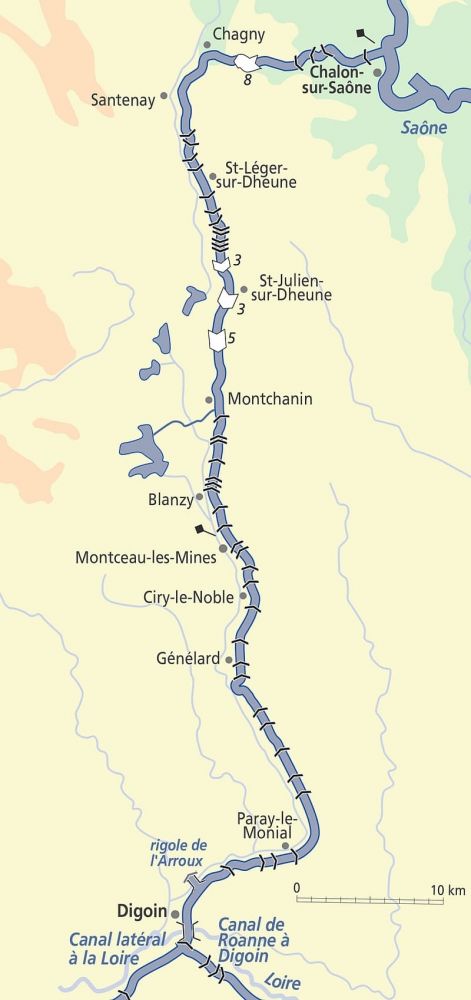
Part 2: Towns & Villages along the Canal du Centre
Chalon-sur-Saône, an important port since ancient times, is at the confluence of the River Saône and the Canal du Centre.
Fragnes is a former commune in the Saône and Loire department in Burgundy; on January 1st 2016 it was merged into Fragnes-la-Loyère.
Rully is a quaint Burgundian village full of charming old houses, a fairy-tale castle and a sleepy main square. A wine-producing village of the Côte Chalonnaise region, it produces both reds (Pinot Noir) and whites (Chardonnay) but the town has a concentration of producers of Crémant de Bourgogne, a sparkling wine made using the Méthode Traditionnelle which some say tastes as good as Champagne produced 100 miles to the north!
Château Rully is a family residence located in the heart of a vineyard. The Château has been in the same family since the 12th century when it was built as a medieval fortress. The castle represents interesting military architecture: covered ways, crenels, machicolations and arches. Inside the arched kitchen of the keep a monumental fireplace can be seen as well as a superb collection of copper kitchen utensils.
Remigny is a small commune on the banks of the Canal du Centre. Surrounded by vineyards, those within its boundaries belong to the celebrated appellations of Chassagne-Montrachet and Santenay. Remigny itself does not have an appellation.
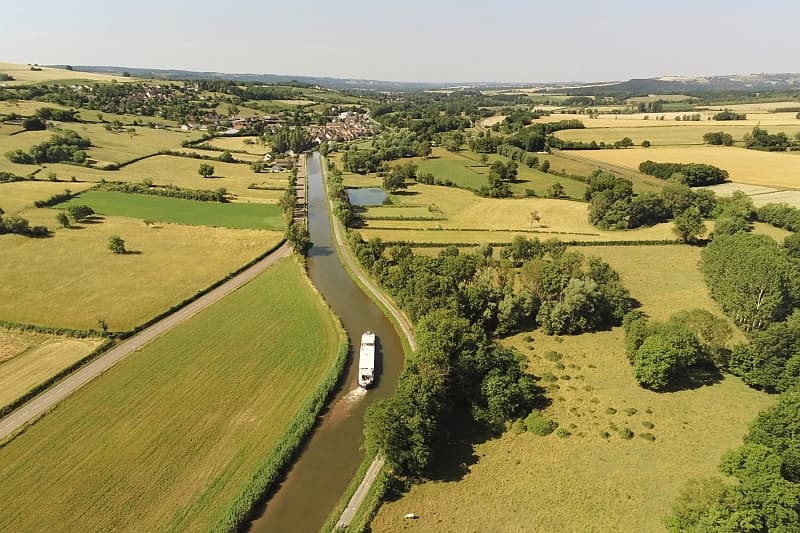
Within the small village of Santenay is a 13th century Château once belonging to one of the Dukes of Burgundy, Philip the Bold, although the village is more famous for its wine. Santenay’s AOC produces around 85% red and a little over 15% of white wine. There are 12 premier cru vineyards located in its boundaries.
Saint-Julien-sur-Dheune is a small community of houses and farms a little further along the canal. In the centre of the village is a port for pleasure craft and hotel barges. There is an approximate population of 240 inhabitants.
The ancient Benedictine priory of Saint-Julien was founded in the 11th century and was once the focal-point of the village. By the 17th century the nuns had left the priory, and it was ultimately destroyed during the French Revolution. Today the only surviving trace of the priory is the church, which has been restored.
Initially an inn and some farms, the settlement of Montceau-les-Mines is an ancient mining town. The construction of the Canal du Centre between 1783 and 1791 and the establishment of the Mining Company in 1833 were catalysts for rapid development.
With coal-mining producing a thriving economy, the town experienced industrial expansion and an exceptional growth of its population, reaching nearly 29 000 inhabitants in 1901.
In 1943 it was celebrated as being one of just eighteen French municipalities decorated with the Resistance Medal, established to help “recognise remarkable acts of faith and courage that, in France, the Empire and abroad, have contributed to the strength of the French people against the enemy and their accomplices from 18 June 1940”.
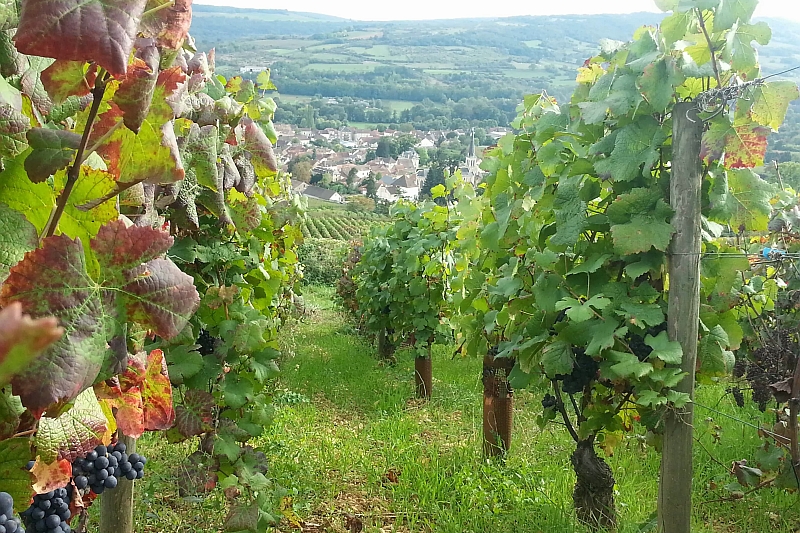
Built from the 12th century, on the site of a 10th-century monastery founded by Count Lambert of Chalon, the Romanesque basilica of Paray-le-Monial was designed as a small-scale version of the Abbey of Cluny III. It was completed in the 14th century, although some sections were added in the 18th century and renovated in the 19th century. As a priory, it was under the authority of Cluny and was a popular pilgrimage site.
The capitals of the columns are generally decorated with vegetable motifs, although some feature depictions of animals and other figures. The choir houses a 14th-century fresco, rediscovered in 1935.
The junction of the Canal du Centre and the Canal Latéral à la Loire is near Digoin. Its aqueduct allows the Loire Canal to cross the River Loire and was one of the first major aqueducts in France, measuring 243m in length and sitting atop 9 pillars and 11 arches. The Digoin aqueduct was designed by the French engineer Pierre-Alexandre-Adophe Jullien.
Opened to navigation in 1838, at the same time as the Canal du Centre, the Canal Latéral à la Loire was expanded in 1870 and later redesigned between 1890 and 1896 by the engineer Léonce-Abel Mazoyer as part of the Freycinet network upgrade.
Part 3: Best Places to Visit
On the edge of the forests of Morvan lies Autun, an ancient Roman town and today an important religious centre. Autun was founded by the Roman Emperor Augustus, after whom it was named. Several elements of Roman architecture including walls, gates and an amphitheatre can still be seen today.
In the early 12th century work started on building the cathedral of St. Lazare d’Autun (St Lazarus) and work advanced quickly enough for it to be consecrated in 1130. The inspiration of the new building, both in layout and decoration, was the Cluniac reform movement and the designs were influenced by the Cluniac abbey of Paray-le-Monial. The cathedral houses the relics of the saint and was an important pilgrimage in the Middle Ages.
St. Lazarus is a masterpiece of Romanesque art, due in large part to the spectacular capitals sculpted by Gislebertus in its nave and choir. He created capitals that used the tendrils of the Corinthian capital to create an architectural frame for the narration of stories. Each capital depicts a different scene, such as the Three Magi or The Flight into Egypt.
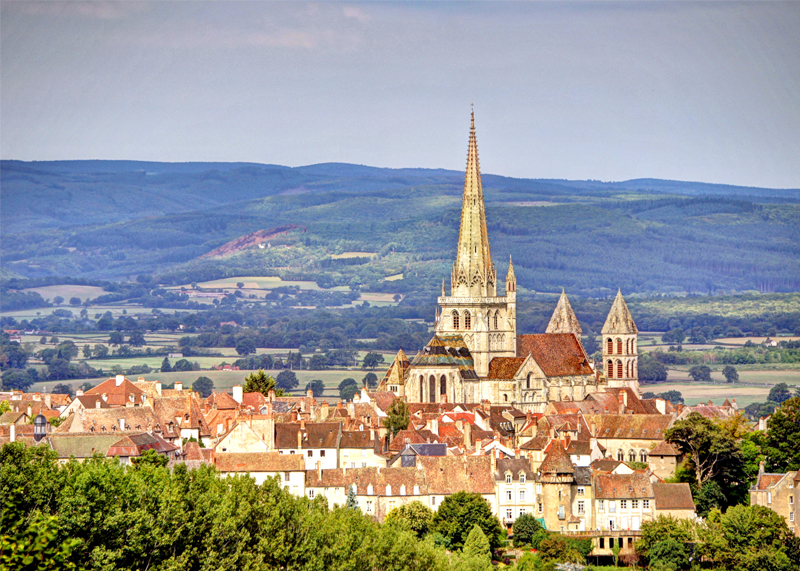
The capital of the Burgundy wine country, Beaune is one of the best preserved medieval cities in France.
Cluny grew up around the Benedictine Abbey, founded by Duke William I of Aquitaine in 910. The height of Cluniac influence was from the second half of the 10th century to the early 12th. During its earliest years the abbey held the title of the world’s largest church until the construction of St. Peter’s Basilica began in Rome. The abbey was sacked by the Huguenots in 1562, with many of its valuable manuscripts destroyed or removed. It was further destroyed in 1790 during the French Revolution, and very little of the Abbey survives to this day.
Dijon is the centre of the Côte d’Or and was the ancient capital of Burgundy in the 14th and 15th centuries.
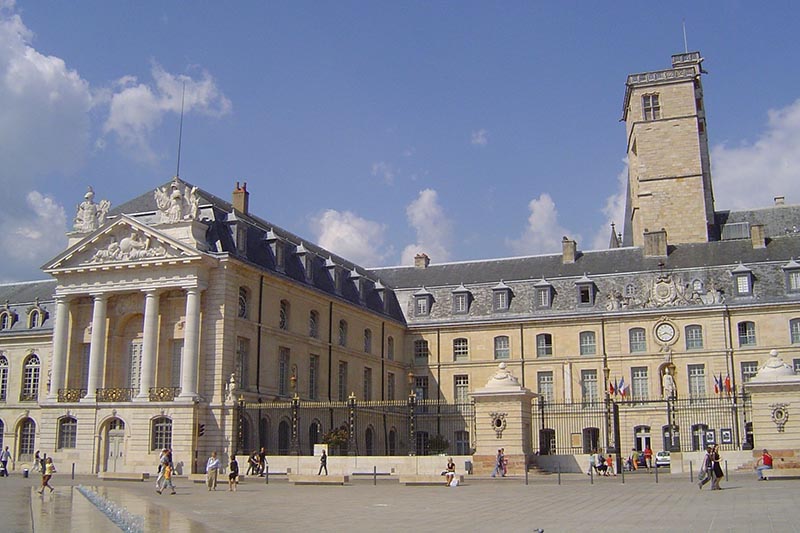
The Château de Chaumont was founded in the 10th century by Odo I, Count of Blois. After Pierre d’Amboise rebelled against Louis XI, the king ordered the castle’s destruction. Later in the 15th century it was rebuilt by Charles I d’Amboise. Protected as a monument historique since 1840, the château passed into state ownership in 1938 and is now open to the public.
Between Tournus and Cluny in the heart of southern Burgundy, the Château de Cormatin lies in the midst of its gardens and water features. Built by the Marquises of Huxelles in the early 17th century to show their power and prestige, the castle was made to impress.
Devised around 1620 and revamped in the “English” style in 1785, the gardens had all but disappeared by 1815 when its soil was used to fill the moat. Some beautiful trees survived including a three hundred year old oak, seven swamp cypresses and the 130 lime trees in the Lamartine avenue beside the river.
During the French Revolution in 1789, the incumbent owner Pierre Dezoteux (also aide-de-camp to Rochambeau during the American Revolutionary War) was able to calm rioters who planned to burn the castle, by rolling out all the barrels from the wine cellars for them.
Long abandoned, a full restoration of the château was initiated in 1980 preserving many original features. Between 1988 and 1989 the re-excavation of the moat allowed the recreation of the gardens in their original Baroque style and they are today listed amongst the finest in France.

Not far from Beaune and Chalon-sur-Saône, the Château de Germolles is the best preserved residence of the Dukes of Burgundy. Built during the second part of the 14th century, this château has great historical significance and furthermore, is a rare example of a well-preserved residence dating from the 14th and the early 15th centuries. This exceptional building still evokes court life in France on the eve of the Renaissance.
Ready to Explore the Historic Canal du Centre?
Guests aboard luxury hotel barge Finesse will have the opportunity to visit many of the sites listed above during the cruise along the Canal du Centre. For more information on our itineraries and the rest of our collection of luxury hotel barge cruises, why not order a free copy of our brochure today or speak to a member of our team directly using our handy Contact Form.
 English
English
 Spanish
Spanish French
French German
German Norwegian
Norwegian Portuguese
Portuguese Swedish
Swedish Italian
Italian Russian
Russian Simplified Chinese
Simplified Chinese Japanese
Japanese